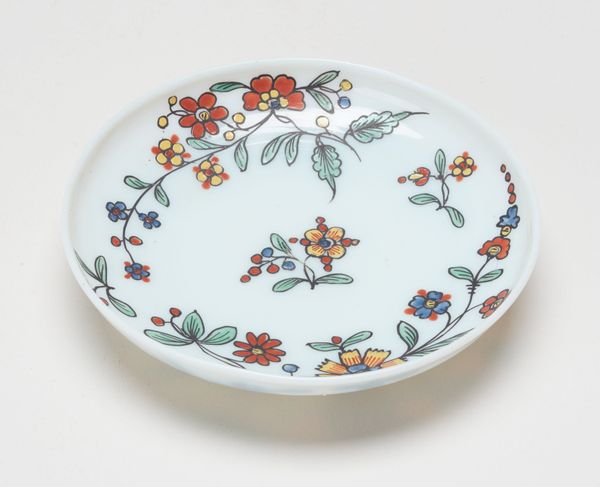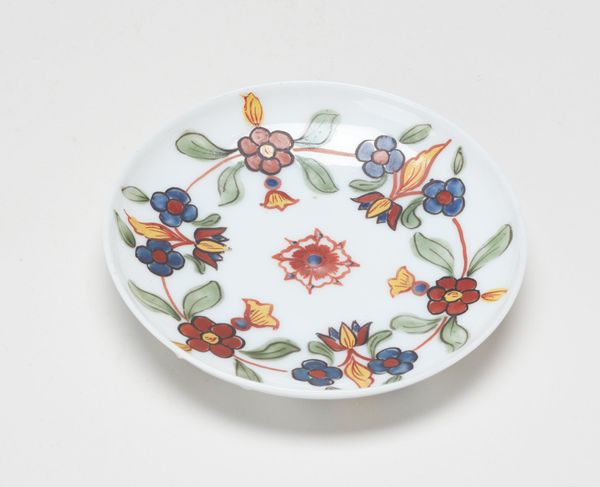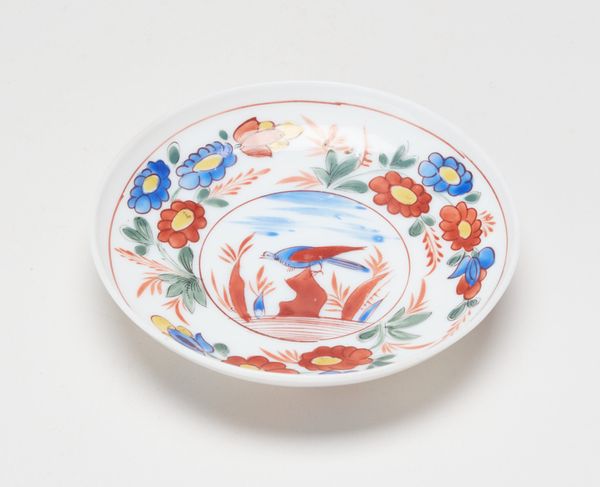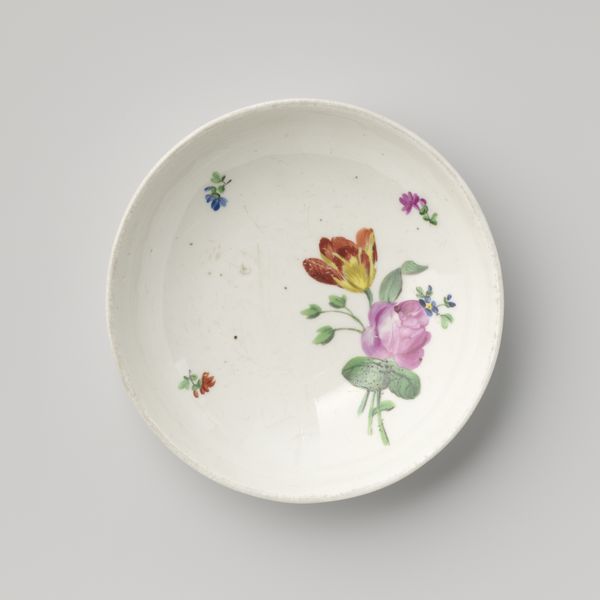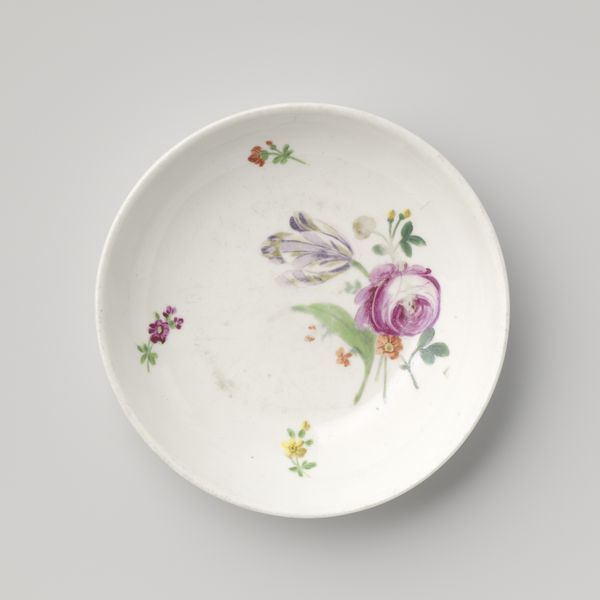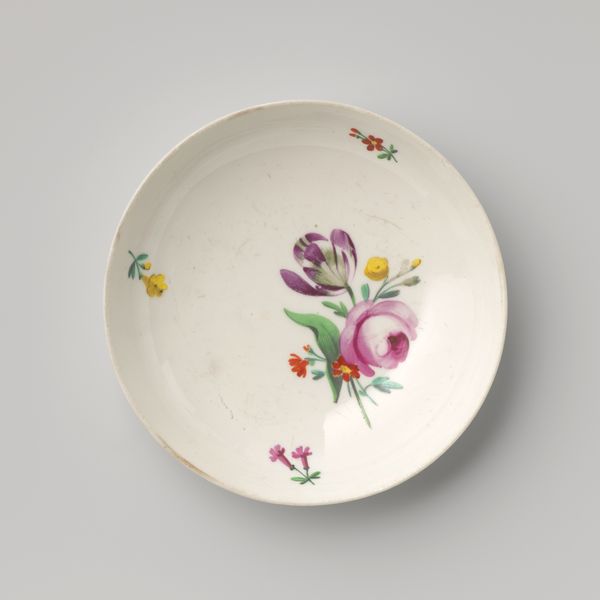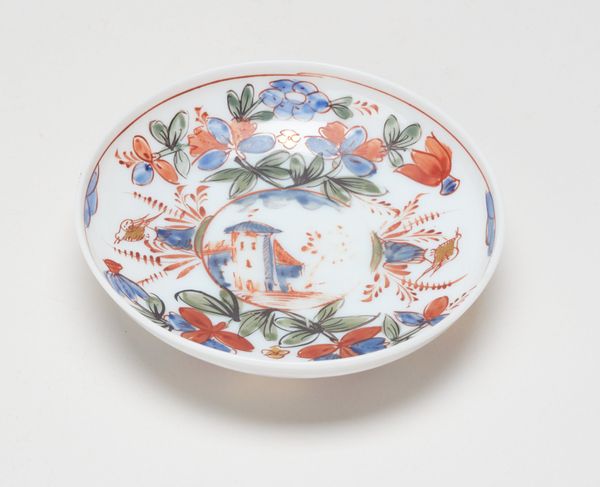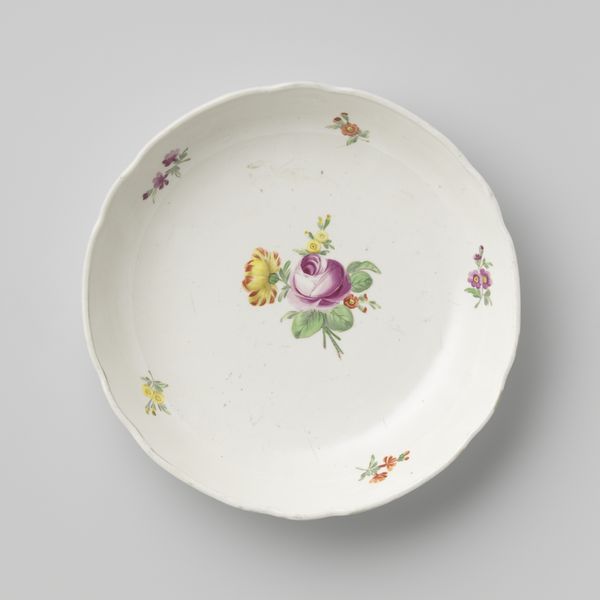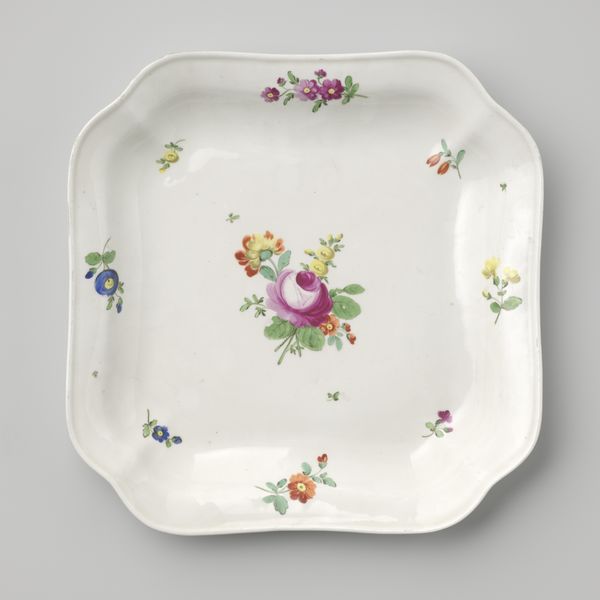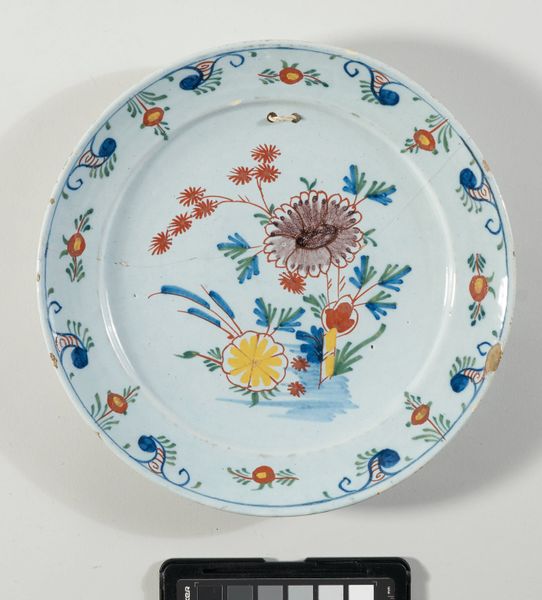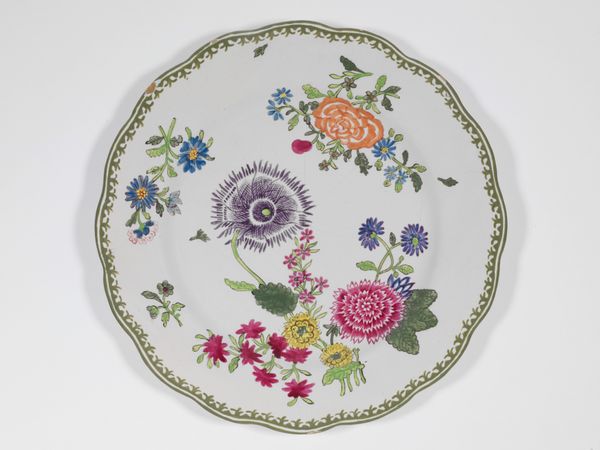
drawing, tempera, ceramic, porcelain, glass
#
drawing
#
enamel pin design
#
tempera
#
pottery
#
ceramic
#
porcelain
#
glass
#
orientalism
#
ceramic
#
decorative-art
Dimensions: 1 1/4 x 4 1/2 x 4 1/2 in. (3.2 x 11.43 x 11.43 cm)
Copyright: Public Domain
Curator: Before us, we have a delicately rendered saucer. Dating from around the 18th century, it is presented as part of the Minneapolis Institute of Art's collection. Editor: My initial response is how vibrant the colors are. There’s something so cheerful about the combination of reds, blues, and yellows on that pristine white porcelain. Curator: Absolutely. While created anonymously, it encapsulates elements characteristic of its period, and particularly reflects an interesting interplay between global trade routes and artistic interpretation. Considering the style known as Orientalism, what aspects of cultural appropriation might be present here? The floral motifs, for example, may have taken on new meanings through the process of exchange. Editor: The visual composition also catches my attention. The rhythmic distribution of the flowers—the clusters versus the individual blooms—creates a very pleasing visual experience, drawing my eye around the circumference of the saucer. The symmetry gives it a nice balance too. Curator: And further, in what social settings would such an object function? Was it part of a set used in elite circles, or was it accessible to a broader segment of the population? Considering factors of class, trade, and the artistic trends, we are allowed to interpret the symbolic meanings embedded in what might first appear as just simple, innocuous decorative piece. Editor: From a purely formal standpoint, I'm fascinated by the glaze—that smooth, almost glass-like finish—that would feel incredibly smooth and sleek to the touch. The way the colors pop against it makes the surface feel quite lively despite being a simple utilitarian shape. Curator: Precisely. Through a complex understanding of historical forces, aesthetic interpretation, and critical engagement, we enrich our appreciation for an item otherwise dismissed. Editor: Indeed. Analyzing its structural elements encourages an intimate, sensuous awareness of its being, allowing it to speak across time and culture.
Comments
No comments
Be the first to comment and join the conversation on the ultimate creative platform.
